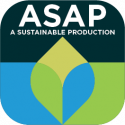We spend 90% of our time indoors. And sitting is the new smoking. In fact, physical inactivity is the 4th leading risk factor for mortality and accounts for 6-9% of deaths worldwide. You might be saying to yourself, “great, so what’s the solution?”
In October of 2014, after years of development; the International WELL Building Institute (IWBI) launched The WELL Building Standard, also known as WELL. The WELL Building Standard was released as an evidence-based system for measuring, certifying and monitoring the performance of building features that impact human health and well-being where we live, learn, and work. WELL takes a holistic approach to health in the built environment; addressing occupant behavior and building operations, policies, procedures, and design. Much like LEED was created to measure how healthy a building is for the planet; WELL was created to measure and verify how healthy a building is for the people living, working, or playing in that building space.
“Design for Healthy Behaviors” is ranked #1 as both the most transformative and fastest-moving sub-trend of the Health and Well-Being macro-trend,” reported ASID Industry Outlook, 2015. Research also shows that most employers are already offering health and wellness programs or initiatives, or plan to start providing them in the near future. On average, only 15% of building occupants will participate in these wellness programs. On the other hand, 100% of building occupants participate in, and benefit from, a WELL certified building.
In May of 2018, IWBI released the WELL v2 Pilot. I love this version of WELL because it is more flexible. The WELL v2 Pilot includes a new feature set with fewer preconditions and weighted optimizations. By eliminating preconditions that required construction or major renovations in v1, and focusing preconditions more on education, operations, policies, etc. in v2; existing buildings are now able to undergo certification without having to perform renovations. WELL v2 also provides new pathways to achieve intents and has a robust and easy to use online platform to support project teams.
v1 of the WELL Building Standard focused on seven concepts: Air, Water, Nourishment, Light, Fitness, Comfort and Mind. When v2 was launched, the concepts were updated to reflect an even more holistic approach to human health and wellness. The resulting 10 concepts in WELL v2 are Air, Water, Nourishment, Light, Movement, Thermal Comfort, Sound, Materials, Mind, and Community. You might say, WELL is like a nutrition label for your building. It provides transparency on the quality of our built environment.
Many building owners, developers and companies immediately see the return on investment of the WELL Building Standard. The average company spends 1% of its annual budget on Energy. Approximately 9% of that annual budget is spent on rent and operations. That same budget focuses 90% of its allocations on the People. From salaries, to benefits, to insurance; we spend most of our budgets on the people in our buildings. Where we live, learn, and work matters! WELL is providing a path to increase our ability to be healthy and productive, regardless of where we spend the majority of our time. The scientific and medical data makes it abundantly clear that we need to invest in people for the best return on investment!

